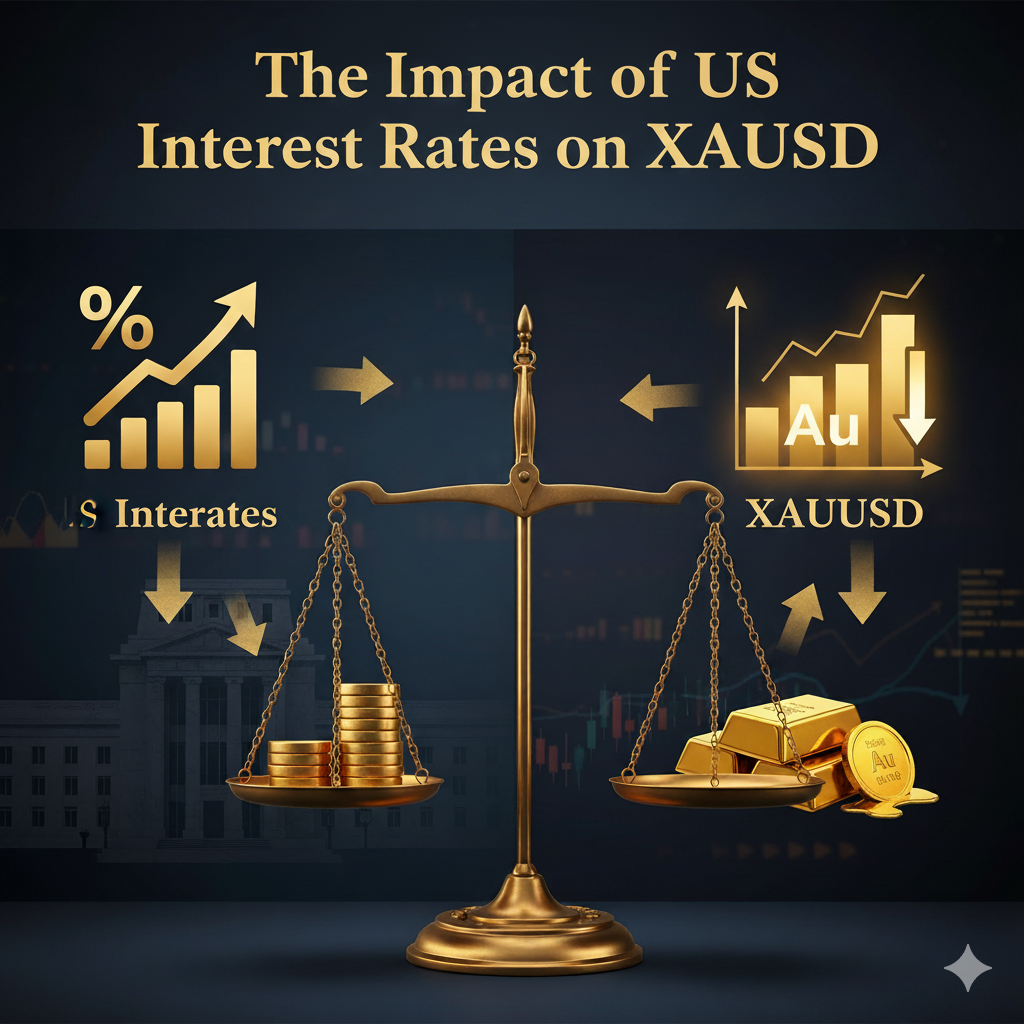The relationship between XAUUSD and US interest rates is a complex phenomenon that significantly affects the investment’s appeal and its price in US dollars. Knowledge of such mechanics can help traders and investors distinguish between market noise and important shifts in trade direction. Here, the impact of US interest rates on XAUUSD is discussed in more detail. Just follow that.
The Rise & Fall of the US Interest Rate Affects Gold Production
As interest rates rise, short-term returns on cash and bonds increase, thereby raising the opportunity cost associated with gold investments. However, when interest rates decline or the Federal Reserve signals an accommodative stance towards inflationary pressures, such as rising rates, expectations, timing, or surprise reactions matter considerably for market performance. In that condition, gold becomes relatively more desirable to hold. The market often reacts similarly regardless of the economic forces at play. All expected reactions and time frames play their parts in making investments worthwhile or unattractive when faced with yield fluctuations. The changes often determine market reactions over time, making predictions unnecessary.
The Impact of US Interest Rates on XAUUSD: Real Yields and Opportunity Costs

Real yields provide a simpler framework. Gold typically tracks production inversely: as real yields climb, investors may gain better inflation-adjusted returns from Treasury instruments than from gold, but when real yields decline or become negative, gold typically benefits as the opportunity cost of holding it decreases.
The US Dollar Determines the XAUUSD Performance
Interest rate fluctuations also affect the U.S. dollar. Rising US interest rates can support it as foreign capital seeks better returns in dollars. Since gold prices are measured against it, stronger dollars often make it more expensive for non-dollar buyers, which weakens XAUUSD performance. On the other hand, when interest rates are reduced and the dollar weakens simultaneously, gold usually surges due to greater non-dollar demand and stronger buying interest.
Inflation Expectations and Fed Signaling
Gold can serve as an inflation hedge. When the Federal Reserve raises rates to combat inflation, its effect will depend on whether its increase tames inflation expectations; if so, gold may fall. Otherwise, investors might feel uncomfortable due to persistent price pressures, which in turn trigger more gold purchases and push XAUUSD into rally mode, just as market interpretation of forward guidance and dot plots could move XAUUSD rapidly, as could changes to rates themselves.
What Traders Should Watch
Closely monitor the dollar index, CPI releases, and Fed communications. Inflation surprises or unexpectedly aggressive delivery tend to put pressure on gold. On the contrary, more neutral surprises boost it. Liquidity and risk sentiment also play a part in gold’s price rise. Even during periods when interest rates rise quickly, it can remain elevated during flight-to-safety episodes, when sentiment swings toward protection rather than risk-taking.
The Impact of US Interest Rates on XAUUSD: A Big Changing Factor in the Market
US interest rates are an integral component of XAUUSD, yet they don’t act in isolation. Instead, real yields, the dollar, inflation expectations, and market psychology all play a part in shaping its path. Trading specialists who pay close attention to all these interrelationships rather than only headline rate numbers can gain greater insight into where gold might head next. Neuron Markets, a genuine trading platform, can help traders in a big way by training them for every situation and teaching them the best strategies to move forward successfully. Also, keep tabs daily on positioning and flow as confirmation from insider trading partners!


